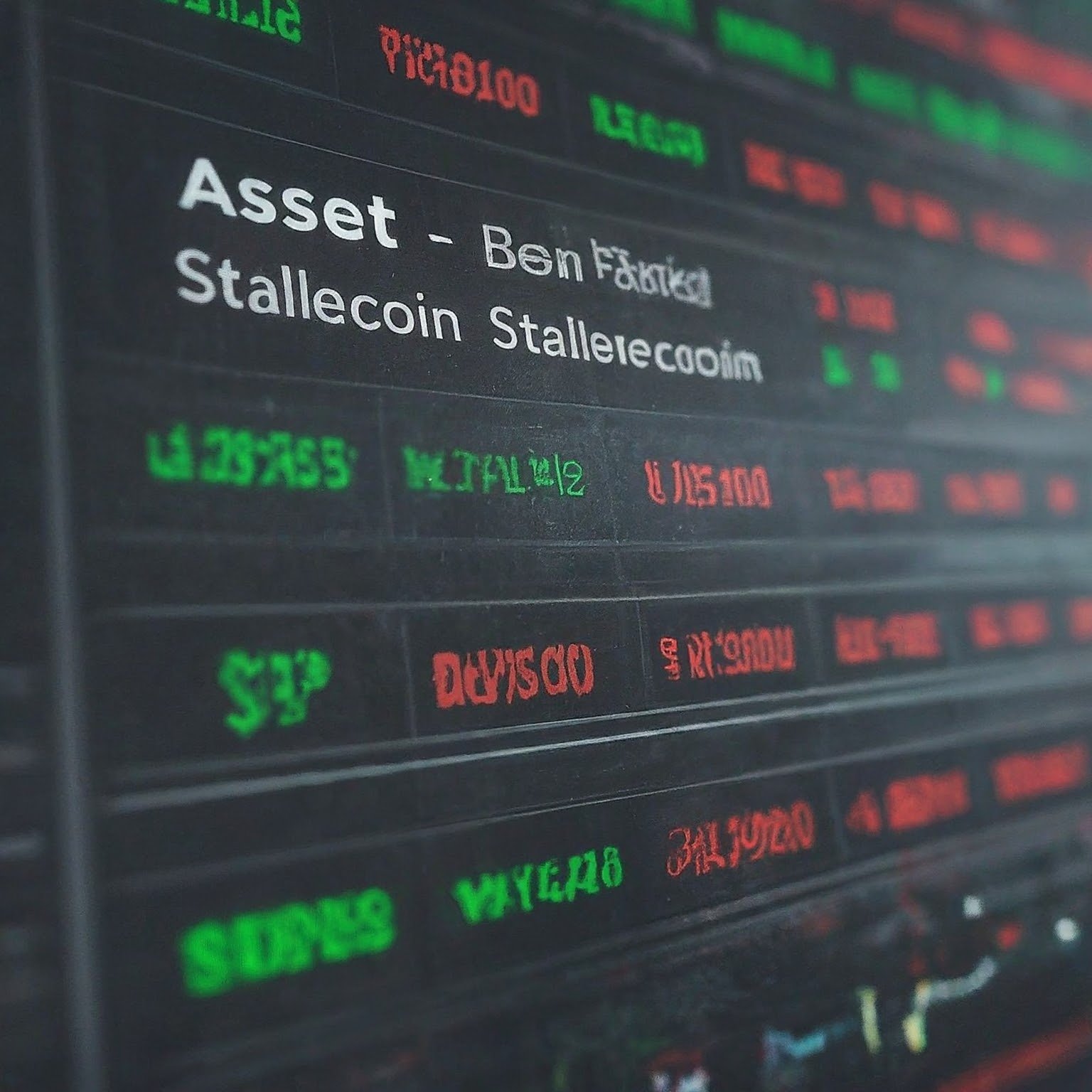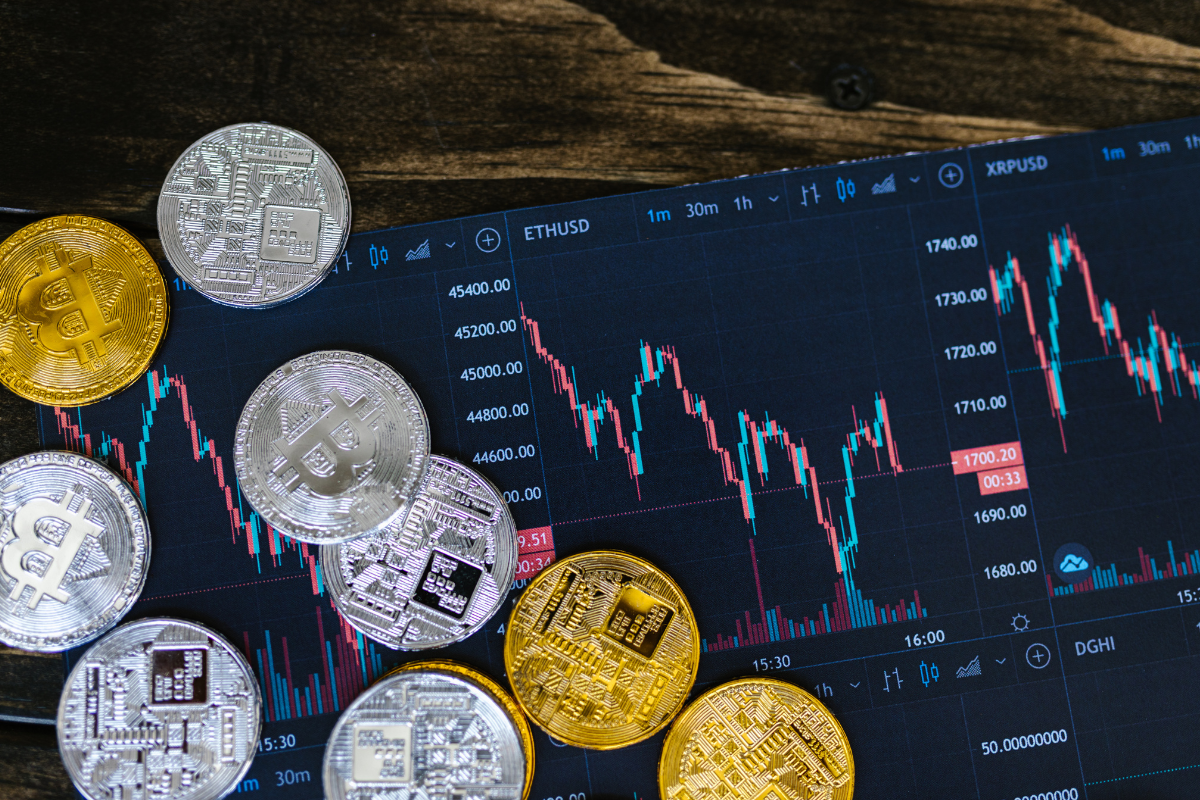Welcome to the fascinating world of asset-backed stablecoins! In the vast universe of cryptocurrency, where digital currencies ride the waves of market volatility, asset-backed stablecoins shine as beacons of stability and promise stable returns. Unlike their more popular cousin, Bitcoin, which is known for its wild price swings, stablecoins are designed to offer a smoother financial journey. They are tied to real-world assets like gold, fiat currencies, or even commodities, providing a safety net against the often unpredictable crypto market. This exciting aspect of the digital asset world is gaining traction for its potential to revolutionize how we view and interact with cryptocurrencies. So, let’s dive in and explore how asset-backed stablecoins could be your ticket to more stable returns in the crypto realm!
Understanding Asset-Backed Stablecoins

Definition and Concept
Asset-backed stablecoins are a fascinating evolution in the cryptocurrency world, designed to marry the revolutionary potential of digital assets with the reliability of traditional investments. Unlike their more famous cousin, Bitcoin, which can see its value swing wildly from day to day, asset-backed stablecoins are pegged to real-world assets like gold, fiat currencies (think dollars, euros, etc.), or even commodities. This pegging process gives them stability that’s rare in the digital currency space. Imagine if you could enjoy all the benefits of cryptocurrency—like making transactions across borders without hefty fees—without having to worry about waking up to find your digital wallet’s value had plummeted overnight. That’s the promise of these stablecoins. Also read The Rise of NFT-Backed Stablecoin Lending (US).
Types of Assets Backing Stablecoins
So, what kinds of assets can back these stablecoins? They can be broadly categorized into three types:
- Fiat-backed stablecoins are the most common and are directly pegged to national currencies, maintaining a 1:1 value ratio. For example, 1 stablecoin might always equal 1 USD.
- Commodity-backed stablecoins are another variety, tied to the value of physical goods like gold or oil. Investing in these can feel a bit like investing in the commodities market, but in a more digital and accessible way.
- Crypto-backed stablecoins stand out by being backed by other cryptocurrencies. However, to ensure stability, they’re overcollateralized to cushion against the crypto market’s volatility. This means if a stablecoin is backed by Ether, there might be $2 worth of Ether held in reserve for every $1 stablecoin issued.
Benefits of Asset-Backed Stablecoins
1. Stability in Volatile Markets
One of the most significant advantages of asset-backed stablecoins is their ability to maintain stability in a market known for its high volatility. This stability is not just theoretical; it’s built into the very structure of these coins through their backing assets. For investors, this means less anxiety over sudden market shifts and a safer haven for their digital asset investments.
2. Potential for Stable Returns
While “stable” might suggest modest returns compared to the high-flying gambles of other cryptocurrencies, asset-backed stablecoins offer a unique value proposition. Their stability means they can serve as a reliable store of value over time, especially in economically turbulent periods. Moreover, some asset-backed stablecoins offer interest or dividends, particularly those backed by commodities or currencies held in interest-bearing accounts.
3. Security and Transparency
Given the backing of real-world assets, asset-backed stablecoins are typically surrounded by a higher degree of regulatory scrutiny and security measures. This setup demands transparency in how these coins are issued and managed, providing an added layer of trust for investors. Plus, the use of blockchain technology ensures that transactions are secure and tamper-proof, offering peace of mind that is often hard to find in the broader crypto market. Also read Low Competition NFT Opportunity: Turning Viral Posts into Digital Assets.
Popular Asset-Backed Stablecoins in the Market

The crypto landscape is vast and varied, with several digital currencies vying for attention. Among these, asset-backed stablecoins have carved a niche owing to their stability and reliability. Here’s a look at three prominent asset-backed stablecoins currently captivating investors and users alike.
Tether (USDT)
Tether (USDT) is arguably the most well-known asset-backed stablecoin, pegged one-to-one with the US dollar. Launched in 2014, USDT aims to combine the unrestricted nature of cryptocurrencies with the stable value of traditional currencies. It provides a secure and stable medium for transactions and is widely used across crypto exchanges as a substitute for fiat currencies.
USD Coin (USDC)
USD Coin (USDC) is another heavyweight in the stablecoin arena. It’s fully backed by the US dollar and driven by the ethos of transparency and trust. Managed by the Center Consortium, a collaboration between Circle and Coinbase, USDC publishes monthly verifications of the corresponding US dollar reserves, offering a layer of reassurance to investors and users. Its integration across various platforms has made it a popular choice for digital transactions and investments.
TrueUSD (TUSD)
TrueUSD (TUSD) brings its unique flavor to the stablecoin mix. Like its counterparts, it is pegged 1:1 with the US dollar, focusing on full collateral, legal protection, and regular auditing. TUSD takes a strong stance on transparency and trust, providing users with regular, independently verified attestations of the backing funds. It’s an attractive option for those seeking stability with a robust emphasis on security and compliance.
The Role of Asset-Backed Stablecoins in the Crypto Ecosystem
Stablecoins, especially those backed by assets, play a pivotal role in the cryptosphere. They’re not just digital cash substitutes; they’re the linchpins of market stability and catalysts for broader adoption.
Facilitating Trading and Investments
In the volatile world of cryptocurrencies, asset-backed stablecoins provide a much-needed oasis of stability. They enable traders to hedge against market swings, acting as a safe haven during turbulent periods. Furthermore, these stablecoins serve as liquid, stable assets that can be quickly converted into other cryptocurrencies or used for investment purposes, thereby facilitating trading and ensuring seamless transactions across various platforms.
Use Cases in DeFi Platforms
DeFi, short for Decentralized Finance, is a burgeoning sector that leverages blockchain and cryptocurrencies to offer financial services without centralized intermediaries. Asset-backed stablecoins are integral to DeFi platforms, serving as stable collateral for loans, yield farming, and earning interest. Their stability and liquidity make them ideal for various DeFi applications, driving innovation while ensuring user confidence.
Cross-Border Transactions
The global nature of cryptocurrencies makes them an ideal solution for cross-border transactions, but volatility often hinders their broader acceptance. Enter asset-backed stablecoins. With their stable value and easy convertibility into local currencies, these digital assets streamline international trade and remittances, reducing costs and enhancing efficiency. They eliminate the unpredictability associated with typical crypto transactions, making global commerce smoother and more predictable.
In essence, asset-backed stablecoins are not just about maintaining a steady value; they’re about enriching the crypto ecosystem, facilitating seamless transactions, and broadening the scope of what digital currencies can achieve. Their role in trading, DeFi, and cross-border transactions underscores their importance and highlights their potential to shape the future of finance.
Challenges and Risks Associated with Asset-Backed Stablecoins
The journey of asset-backed stablecoins, though promising, is not without its bumps. Like any pioneering financial instrument, it comes with its own unique set of challenges and risks. Understanding these is vital for any investor or enthusiast looking to dive into the world of stablecoins.
Regulatory Concerns
One of the major hurdles asset-backed stablecoins face is the regulatory landscape. Since they are a form of cryptocurrency but also backed by real-world assets, it’s not always clear which laws apply. Different countries have different rules around cryptocurrencies and securities, and stablecoins might fall into either category (or both!) depending on the jurisdiction. This regulatory uncertainty can make it challenging for stablecoin projects to operate on a global scale, potentially limiting their reach and effectiveness.
Centralization Risks
Another point of contention is the centralization risk. By nature, asset-backed stablecoins require a central authority to manage the underlying assets. This goes against the grain of the decentralization ethos that cryptocurrency was built upon. The need for a trusted party to hold and manage real-world assets introduces a potential single point of failure. There’s the risk that this authority could act maliciously or incompetently, jeopardizing the stability and security of the stablecoin.
Asset Liquidity Issues
The liquidity of the underlying assets also poses a challenge. For a stablecoin to remain stable, the assets backing it need to be easily convertible into cash or other forms of value without significantly impacting the asset’s price. However, not all assets have high liquidity. In times of market stress, if there’s a rush to redeem stablecoins for the underlying assets, it could lead to liquidity issues, ultimately affecting the stablecoin’s ability to maintain its pegged value.
Future Outlook for Asset-Backed Stablecoins
Despite the challenges, the future for asset-backed stablecoins appears bright, filled with opportunities for growth, integration, and innovation. Here’s how the landscape may evolve in the coming years.
Growth Potential in the Crypto Market
Asset-backed stablecoins have enormous growth potential within the crypto market. Their inherent stability offers a safe haven from the volatility of traditional cryptocurrencies, making them attractive for both individual and institutional investors. As the market matures and more people seek stability along with exposure to digital assets, the demand for asset-backed stablecoins is expected to surge.
Integration with Traditional Financial Systems
Another exciting prospect is the integration of asset-backed stablecoins with traditional financial systems. This integration could pave the way for more seamless transactions between digital and fiat currencies, making digital assets more accessible to the general public and businesses alike. Over time, we may see stablecoins being used for everyday transactions, remittances, and even centralized banking operations, bridging the gap between the traditional and digital economies.
Innovation and Development Trends
Finally, we can anticipate ongoing innovation and development within the stablecoin sector. Technological advancements and creative solutions could address current challenges such as regulatory concerns, centralization, and liquidity issues. For instance, new models of decentralized governance and asset management are being explored to minimize centralization risks. Meanwhile, advancements in blockchain technology may offer more robust solutions for asset tokenization and liquidity management.
In conclusion, while asset-backed stablecoins currently face several challenges, their future in the digital currency space is promising. Their capability to provide stability and returns, paired with ongoing innovations, suggests they will play a pivotal role in the evolution of the crypto market and its integration with traditional financial systems. The journey ahead is certainly looking bright for asset-backed stablecoins.
Conclusion
In the fast-paced world of cryptocurrency, asset-backed stablecoins carve out a niche for those seeking to combine the innovative appeal of digital assets with the reassurance of tangible backing. Unlike their more volatile counterparts, these stablecoins offer a semblance of stability and predictability, making them an attractive option for cautious investors and those looking to diversify their digital portfolio. As the market evolves, the role of asset-backed stablecoins is set to become increasingly significant, providing a bridge between the traditional financial world and the burgeoning digital economy. By choosing to invest in these stable assets, you’re not just participating in the crypto revolution but doing so with a safety net that traditional currencies cannot offer in the digital age. As we’ve explored, their potential for providing stable returns amidst the cryptosphere’s turbulence is not just promising—it’s already beginning to take shape.







